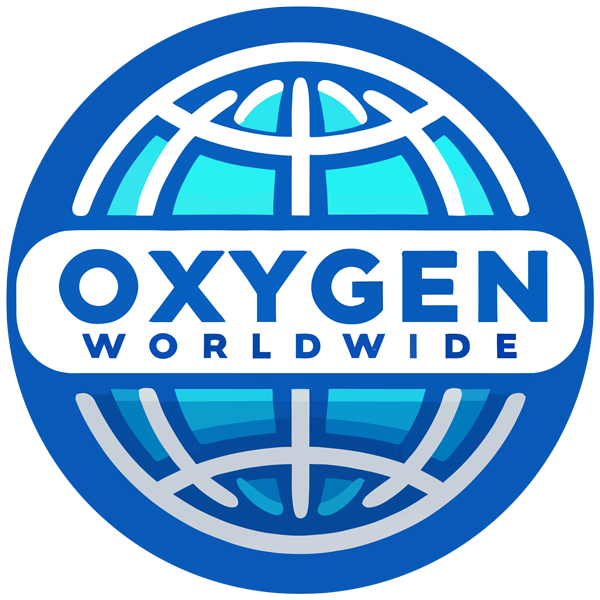If you rely on medical oxygen to survive – even simply to enjoy a good level of health – you don’t want to take a chance on not being able to access the supplies you need. Sometimes this results in people reducing their activities, avoiding going to events that mean they’ll be away from their oxygen device for long periods of time and even eschewing travel.
Needless to say, this can result in quite a boring, constrained life – and it’s quite unnecessary! With the right preparation arranging oxygen for international travel does not have to be difficult or risky. Let’s take a look at with this oxygen travel preparation guide that will lay out all the must-dos and how-tos so you can travel with a light heart and easy breathing.
The first thing you will need is to understand what your responsibilities and duties are: the following travel checklist for oxygen users will guide you through the whole process – if you work your way from the first item to the last, you will have largely covered all the bases and be set for your safe and stress-free trip.
Item 1: Consult your Healthcare Provider
As soon as you start thinking that you might want to travel, the first thing you should do is make an appointment with your doctor or medical team. Let them know that you’re thinking about traveling and to where you will be going. Ask specifically about necessary vaccinations, if they have any advice about traveling to that particular country, and if they have any general advice to keep you in good shape while you are away from home.
Do note, however, it is important you do your own investigation as much as possible: it is your responsibility, not your doctor’s to make sure you know if you need a medical certificate stating you are fit to travel, a copy of your prescription (some countries will not dispense oxygen without one), and anything else unique to your chosen destination.
This oxygen travel preparation guide might be useful to help you understand everything that might be needed: you can use this one, or rework it to be specific to your country of origin, destination and specific medical condition.
Item 2: Coordinate with an Oxygen Supplier
Let your regular supplier know that you will be away, so they can adjust the oxygen they send you, pausing your supply until you return. Do make sure you will have enough to last you until you go, and perhaps a supply waiting for you at home – or at least, a small delivery that you can collect on your way home to tide you over until your regular deliveries resume.
And to ensure that you can access the oxygen supplies you need while traveling, engage the services of a specialist logistics company which prides itself on arranging oxygen for international travel – including for those flying with medical oxygen devices which can be sometime of a minefield (explosive pun not intended!) – such as OxygenWorldwide.
OxygenWorldwide can facilitate oxygen deliveries to just about any country, usually in your chosen form of medical device. Your oxygen can be delivered to your accommodation, to your mode of transport, or even meet you at the airport or port – wherever you need it.
Item 3: Understand Transport Regulations
As hinted above, oxygen is known as a hazardous substance because of its readiness to explode under the right (or wrong) conditions. This means that transporting oxygen cylinders and respiratory equipment can be tricky, and not only on airplanes, although flight regulations are among the strictest. On buses, trains and cruise liners, regulations are a little more relaxed, but you should still always check beforehand that your particular model and needs can be met – sometimes this can make the difference between you being given a cabin or sleeping berth with access to a power point, vital for keeping your nighttime oxygen flowing.
The main concern with these modes of transport is that space is a premium, and oxygen tanks and devices take up cubic volume and also add weight to the vehicle. This is why you must inform your transport supplier as soon as you can, and check that you will be good to travel with your medical oxygen.
Item 4: Arrange Necessary Equipment
In most cases, you will be able to use only a portable oxygen concentrator (POC) when in flight, with any oxygen cylinders, empty and in the baggage hold. Make sure – well in advance – that your POC is one of those approved for use on the flight and, if not, ask the airline if they can rent or lend you one for the flight.
Failing this, OxygenWorldwide might be able to help source a compatible device for you to use on the flight. Hiring a POC for the duration of your trip is probably not a bad idea, if it can supply you with sufficient oxygen. This is because it is the lightest and most portable of all the medical oxygen devices, and will be the most discreet to use while out and about exploring new cities and seeing all the sights.
NB: you must be fully able to manage your oxygen apparatus, including understanding what any alarms mean and knowing how to reset them or otherwise manage the device.
As well as the above, make sure you know what batteries or chargers your medical device needs, carry some spares with you, and quickly find out, upon arrival, where you might quickly source replacements should that become necessary. Also think about things like nasal cannulas, masks and so on.
Item 5: Plan for Destination Needs
At every step of the way, inform everyone about your medical needs and the fact that you will not only be getting a steady supply of oxygen, but also that you will need handy plug points. Your accommodations will need to be told, so they are aware that your oxygen will be arriving and can direct it to the right place, as well as making reasonable accommodation for your needs.
Also ensure that you know where the nearest or most appropriate medical care can be found, and if you can, sign up with a local medical centre so you can be sure of first-class medical care should an emergency arise.
Item 6: Verify Your Insurance Coverage
When taking out travel insurance (and you should take out travel insurance) make sure that they know about your medical condition, and specifically ask for a policy that includes coverage of your specific medical issues, even if you have to pay a little extra for the additional coverage. It is infinitely better to have thorough insurance coverage and not need it than the opposite…
Get into the habit of carrying your insurance documentation with you, securely in an unloseable pouch or pocket.
Item 7: Pack Essential Documents
These documents not only include your passport and ID, but also insurance certificates and contact information. And that contact information should include OxygenWorldwide’s emergency phone number which is manned around the clock by operatives who are authorized to adjust oxygen supplies to travelers as and when they need to. And, last, but definitely not least, you should always have your doctor’s certificate stating your ability to travel and an up-to-date prescription on hand, so you can reassure transport personnel of your fitness to travel as well as being sure of accessing the oxygen you need to keep you that way.
Item 8: Prepare for Security Screenings
The TSA is famously strict about letting people through their gates, and anyone who is different in any way – such as carrying a portable oxygen device with them – will almost certainly draw extra scrutiny. Stay up to date with TSA guidelines, if you’re traveling to the USA, and ensure your oxygen devices fall within the allowed limits in all cases. Get any certificates and permissions you need, and carry the proof of your compliance with you at all times.
Item 9: Monitor Your Health While Traveling
Traveling is stressful, especially when you haven’t done a lot of it, and your symptoms might change depending on the air quality, altitude and more of the destination country. This can make it easy to miss early-warning indications that you are unwell or about to be. Make sure you know how to recognize oxygen desaturation, whether by paying attention to your body or by using pulse oximeters, and if in doubt, contact a health professional for a quick check-up. If you are falling ill, the earlier you treat it, the lower the impact it will have on your holiday.
By following this oxygen travel preparation guide, you can see that, yes, it is quite a lot of work to do before you can travel with confidence. And yet, putting in those hours and setting up back-up plans, means that you will be able to travel knowing that your oxygen needs will be met, promptly and efficiently, at your choice of destination. And once you start traveling successfully, you won’t look back, except to enjoy the fond memories and plan your return trip for as soon as possible.




